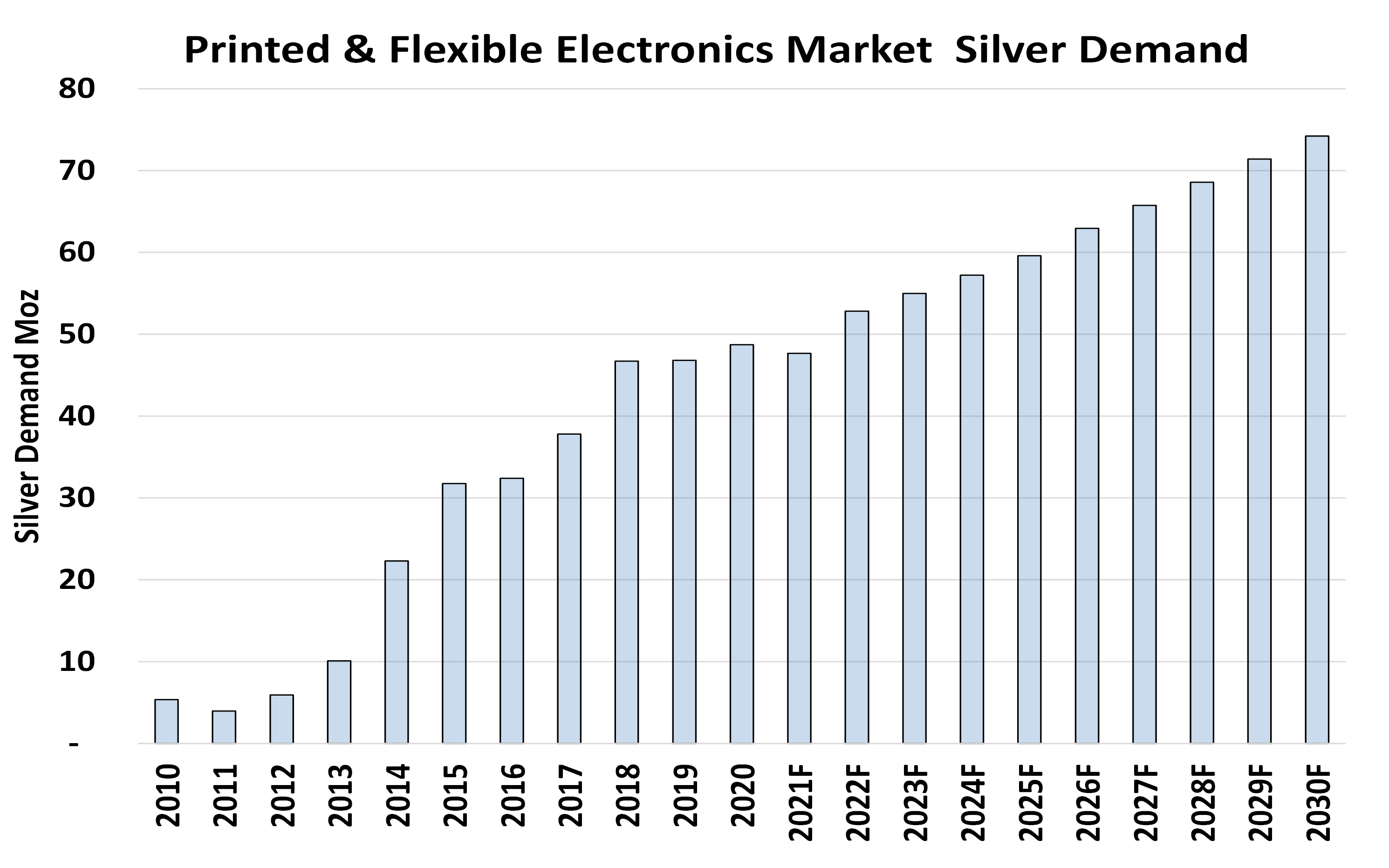Silver Demand for Printed and Flexible Electronics Forecast to Consume 615 Million Ounces of Silver Through 2030
(Washington, DC – May 19, 2021) Silver demand for printed and flexible electronics is forecast to increase 54 percent, from 48 million ounces (Moz) in 2021 to 74 Moz in 2030, consuming 615 million ounces for these applications during the 10-year timeframe, as this market continues to mature and expand. Printed and flexible electronics are vital to the evolution of electronic technologies as they are mainstays in a wide range of products, including sensors for temperature, pressure, motion, lighting, moisture/relative humidity, radar, heart rate, and carbon monoxide. Other applications include their use in internet connected devices, medical and wearable electronics, displays for appliances, mobile phones, computers and tablets, medical devices, automotive, and consumer electronics.

Printed & Flexible Electronics Market Silver Demand.
Source: Precious Metals Commodity Management LLC
According to a new Market Trend Report released today by the Silver Institute, “Silver in Printed and Flexible Electronics,” authored by the precious metals consultancy Precious Metals Commodity Management, silver will continue to play an essential role in this application. The report examines precious metals use in various electronic markets. It also assesses current silver demand by market sector, the fundamentals of printed and flexible electronics, and concludes with a forecast for silver’s use in this application through 2030.
Manufacturers are incorporating printed and flexible electronics into their devices and products because they are flexible, customizable, innovative, and portable. Since many of these electronics can be processed on a roll-to-roll or large area substrate, their cost and manufacturability make these technologies extremely attractive. For example, printed and flexible electronics are increasingly being used in labels and packaging for retail goods, and warehouse logistical operations. They are vital to smart buildings that rely on wholly integrated systems that share essential information using internet connected sensors to control HVAC, lighting, security, energy, access, and security monitoring, and other applications.
Silver is the most conductive metal in the world and is a key component in virtually all electronic applications, including consumer electronics, automotive electronics, microelectronics systems, LED (light emitting diode) and Organic LED displays, photovoltaics, semiconductors, and power distribution components. As the world drives towards greater connectivity, which will require higher amounts of electrification, silver will continue to be vital to the expansion of flexible and printed electronics technologies.
To download the complimentary report, please click here.
# # #
The Silver Institute is a nonprofit international industry association headquartered in Washington, D.C. Established in 1971, the Institute’s members include leading silver producers, prominent silver refiners, manufacturers, transporters, and dealers. The Institute serves as the industry’s voice in increasing public understanding of the value and many uses of silver, including its role in numerous green technologies. For more information on the Silver Institute, please visit www.silverinstitute.org
